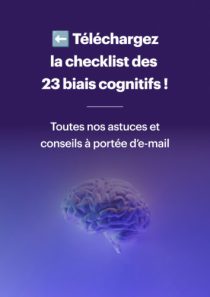Deciding what to develop: the tools and methods for making the right choices
How can you be sure you are developing the right features for your platform or mobile application? Whether you already have a product on the market or are preparing for its launch, you constantly receive ideas and suggestions. It can be challenging to sort through them and determine which ones genuinely add value. With limited resources, every decision matters: investing time and effort into an irrelevant feature can slow down development and impact the product’s success.
When developing a platform or application, it is easy to fall into certain traps:
❌ Developing overly complex features with minimal impact
❌ Following intuition without validating whether it meets user needs
❌ Adding elements that do not align with your product vision
To avoid these mistakes, here are three workshops we offer to structure decision-making:
✅ Categorising features based on their impact and feasibility (Impact-Effort Matrix)
✅ Relying on user feedback to prioritise (Kano Model)
✅ Ensuring each decision aligns with the product vision (5 Why)
By combining product strategy, user needs, and feasibility considerations, these tools will help you create an effective and coherent development plan. Whether you are a product manager or an entrepreneur, this article provides concrete and easy-to-implement methods to help you make the best choices and maximise your product’s potential.
1. Workshop: Impact-Effort matrix
The goal of this workshop is to prioritise features based on their impact on users and business, as well as the effort required to develop, implement, and operate them. This workshop helps focus resources on high-value features while optimising time and costs.

1️⃣ List the features or ideas to evaluate
- Before the workshop, gather ideas from the product backlog, user feedback, or internal suggestions.
- Each participant can propose features for evaluation and present them to the team.
- One idea per card, with a clear name and scales to complete.
2️⃣ Position the features in the matrix
Evaluate each suggestion together based on the following axes (from low to high, on a five-level scale):
- User impact: Assess how the idea simplifies, enhances, or optimises the user experience.
- Business impact: Measure how the feature supports business objectives and project sustainability.
- Resource effort: Anticipate the organisational complexity, including operational implications and interactions with other stakeholders.
- Technical effort: Evaluate the technical constraints, from development to maintenance.
Place each evaluated idea on a two-axis matrix: Impact vs. Effort.
If some ideas are difficult to position, they may need further definition beforehand.

3️⃣ Identify priorities and action plan
With an overview, observe the four categories:
- ✔️ Quick Wins (High Impact, Low Effort) → Implement these first.
- ⚖️ Strategic Projects (High Impact, High Effort) → Plan them long-term.
- 🔄 Secondary Tasks (Low Impact, Low Effort) → Execute if resources allow.
- 🚫 To Avoid (Low Impact, High Effort) → Drop or reconsider them.
Now, integrate these ideas into the roadmap and begin implementation. A good balance between a few quick wins and one or two strategic projects ensures efficient product progression.
2. Workshop: Kano Model
The goal of this workshop is to prioritise features based on user perception to distinguish essential, differentiating, or secondary ones. This workshop prevents investment in unnecessary features and helps design a user-centred experience. It also serves as a strong foundation for the “user impact” dimension in a prioritisation matrix workshop.

1️⃣ Select the features to evaluate
- Before the workshop, gather ideas from the product backlog, user feedback, or internal suggestions.
- Limit the selection to 12-20 key features for efficiency.
- Briefly present each idea; a sketch/illustration or example may help.
2️⃣ Answer the Kano questionnaire
For each feature, each user answers two questions:
- How would you feel if this feature existed?
- How would you feel if it did not exist?
Possible answers:
- Excited / Indifferent / Neutral / Disappointed / Dissatisfied
These two questions may seem redundant, but they help confront implicit user expectations with their real perception, avoiding response biases.
3️⃣ Analyse and interpret responses
For each feature, classify user responses into one of Kano’s five categories by cross-referencing the answers:
- ✔️ Must-have → Essential; the product is unusable without them.
- ⭐ Exciters → Create a “wow” effect but are not missed if absent.
- ⚖️ Performance Features → The more developed they are, the better the experience.
- 🔄 Indifferent → Little perceived impact; can be deprioritised.
- 🚫 Rejected → Considered useless or negative; should be dropped.
Prioritise Must-haves and Performance Features, integrate Exciters if they boost engagement, and set aside or eliminate Indifferent or Rejected features.
Alternative approach: Stack Ranking (Forced Ranking)
If users tend to say “everything is important,” ask them to rank the features in order of priority by assigning scores.
3. Workshop: 5 Why
The goal of this workshop is to challenge and ensure that each feature truly contributes to the product vision and the company’s strategic needs. This workshop helps prevent unnecessary feature development by probing the real motivations behind each idea.
1️⃣ Select key features to challenge
- Identify 5 to 12 backlog features requiring strategic validation.
- Focus on those sparking debates or doubts about their relevance.
2️⃣ Apply the “5 Why” method
For each feature, ask, “Why is this feature necessary?” For each answer, ask “Why?” again, up to the fifth iteration. Example: Considering adding a chatbot to the platform.
- Why? → To improve customer support.
- Why? → Because users frequently ask the same questions.
- Why? → Because the documentation is unclear.
- Why? → Because it is hard to find.
- Why? → Because the menu is not optimised.
Result: The real issue is access to documentation, not the absence of a chatbot. Alternative solution: Improve the menu UX.
3️⃣ Define actions and decisions
- If a feature meets a strong strategic need, it is validated.
- If it reveals a different problem, adjust the solution or explore alternatives.
- Remove or postpone features that do not address a clear issue.
Fun fact: japanese influence on these methods
Two of these methods originate from Japan. The Kano Model was developed by Noriaki Kano in the 1980s to better understand user satisfaction, while the 5 Why method comes from the Toyota Production System, designed to optimise industrial production. These approaches embody the Japanese philosophy of minimalism and continuous improvement: focusing on the essentials, eliminating the superfluous, and prioritising real value.
Your turn: Prioritise with method!
Ideally, feature prioritisation relies on a combination of several methods. Each workshop offers a unique perspective:
- The Impact-Effort Matrix helps balance value and feasibility.
- The Kano Model highlights user perception.
- The 5 Why method ensures strategic coherence with the product vision.
However, prioritisation does not mean waiting. Rapid prototyping and testing remain essential to validate ideas and improve the product over time.
Need support?
Our team of designers can help you prioritise features, refine your concept, and test your ideas to maximise their impact. Feel free to get in touch!





